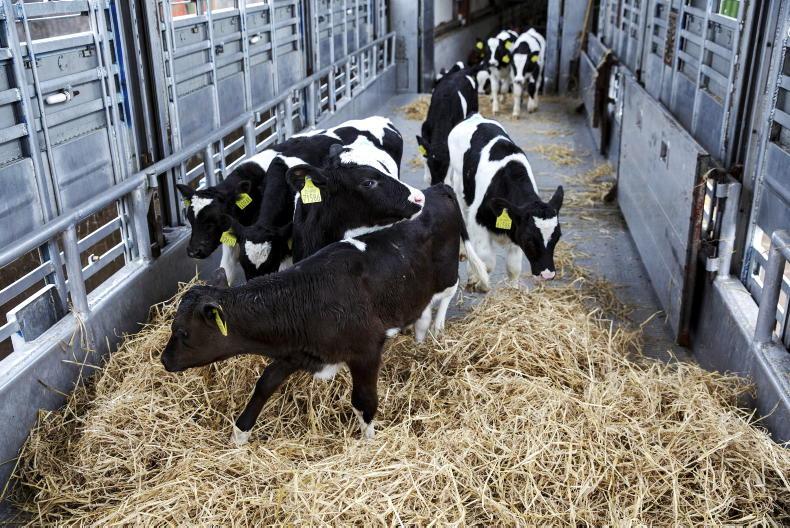The latest live export data published by Bord Bia for the week ending 27 May 2023 shows the number of cattle exported live, at 220,150 head, is running 29,748 head, or 15.6%, above the corresponding period in 2022.
As detailed in Table 1, the increase is being underpinned by a sharp increase in the number of calves exported live. There were 178,445 calves exported compared with 150,270 head in 2022. There has also been a slight increase in the number of live animals exported live, but this increase has been cancelled out by a reduced number of store cattle exported live.
Main destinations
The main destinations that have experienced change in 2023 are the Netherlands, Italy and eastern European countries.
Weekly exports to the Netherlands continues to run ahead of 2022, with 3,219 head recorded in the latest figures compared with 2,638 for the corresponding week in 2022.
The total number of cattle exported live to the Netherlands is now running at 102,156 head, an increase of over 10,000 head or 13.3%.
Spain accounts for the second-highest number of cattle exports, with 50,632 head sent to the Spanish market in 2023 compared with 90,182 in 2022. Weekly exports of 2,644 head are on a par with 2022.
Italy has overtaken Northern Ireland as the third-highest market on a per-head basis. The country has imported 23,411 Irish stock in the year to date, an increase of 7,572 head or some 47.8% higher.
Exports of 1,742 head for the week ending 27 May 2023 were 70% higher than the previous week and 75% higher year on year.
Exports to Northern Ireland totaling 20,053 head are running marginally higher than in 2022’s comparable figure of 19,868 head.
Performance in recent weeks has been more positive, with a higher differential opening up between prices in Northern Ireland and southern plants.
Eastern Europe exports
There has been a marked increase in the number of animals exported to eastern European countries.
Poland has imported 10,369 head so far in 2023, up 8,267 head on 2022. There has been a substantial increase in the number of calves being exported to Poland, while other categories of stock have also recorded increases.
At 3,047 head, the number of cattle exported to Hungary has increased by 2,466 head. These are primarily weanling bulls, which have in turn been exported from Hungary to Turkey.
It is a similar situation with 2,404 head exported to Bulgaria, 1,859 to Romania and 968 to Slovakia.
The number of cattle exported to non-EU countries, at 3,731 head, is showing a deficit of 7,215 head, but this does not account for cattle which have been exported to Turkey via eastern Europe or the shipment of over 3,000 cattle exported to Israel last week.






 This is a subscriber-only article
This is a subscriber-only article










SHARING OPTIONS: